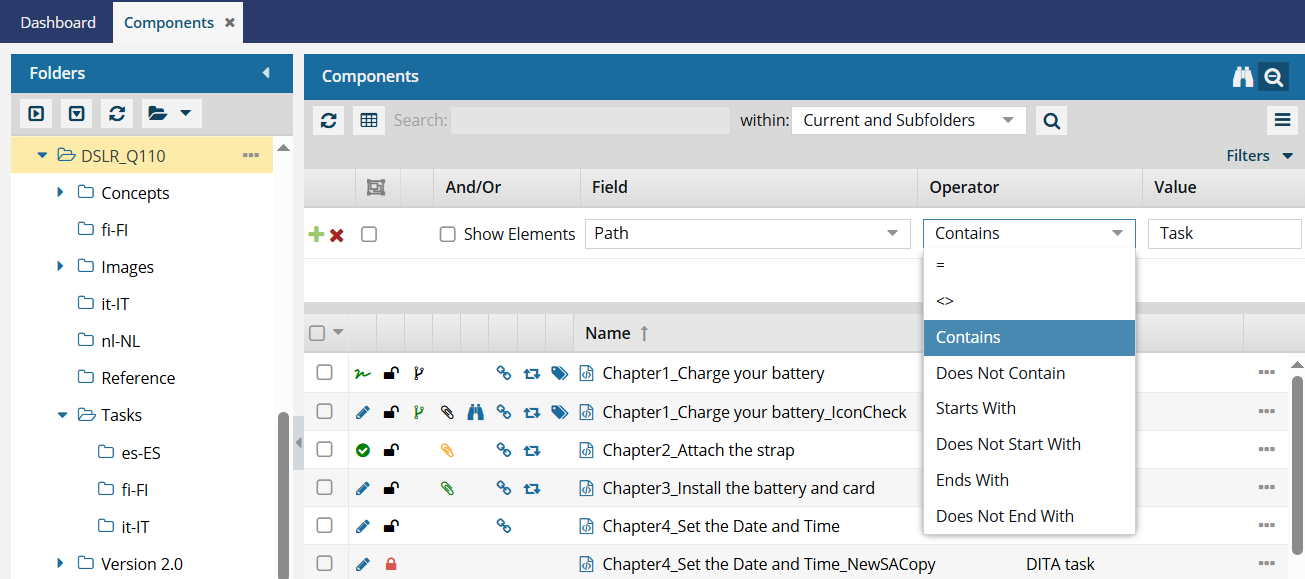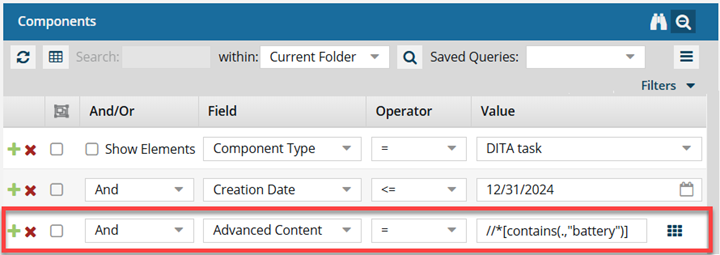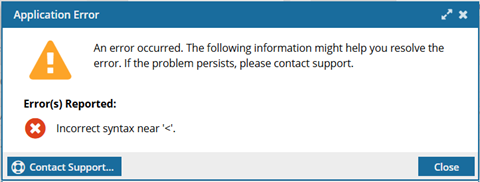If you want to find where a component is stored in a large folder hierarchy, or find what files are stored in a folder that has a long folder path, you can use Advanced Search tools. You must know at least part of a folder name in the path.
 Absolute file paths tell you where a file is stored by explicitly mentioning all its parent folders starting with the root of the hierarchy.
Absolute file paths tell you where a file is stored by explicitly mentioning all its parent folders starting with the root of the hierarchy.
For example, MyCompany/Users/JaneDoe/Content/Authoring/InProgress/MyDeepFile.xml.
- If you want to open a file called MyDeepFile.xml, you can open each of the folders in the folder path.
- This requires you to open six folders before you get to the file.
- If you know that this file is in your InProgress folder, you can quickly access it by searching for Path with a value that equals InProgress.
- If you want to see all of the work you have in progress, you can open each folder in the path until you get to the InProgress folder.
- This requires you to open six folders before you see the file listing.
- You can quickly list the InProgress folder contents by searching for Path with a value that equals InProgress.




To find a path using Advanced Search:
-
Click
 Components.
Components.
-
From the Components pane, choose one of the following folder options to search.
- Current Folder
- Current and Subfolders
- All Folders
-
To open the query builder, click Advanced Search
 .
.
-
To find topics being followed by a specific user, complete the following substeps using the query builder to add search parameters.
-
In the Field list, select Path.
-
From the Operator list, select one of the following options:
- = (Equals)
- <> (Does not equal)
- Contains
- Does Not Contain
- Starts With
- Does Not Start With
- Ends With
- Does Not End With
-
In Value, enter a word or phrase that is appropriate for the operator you selected.
-
Optionally, you can add more parameters in the query builder:
 If you use multiple criteria:
If you use multiple criteria:
- You can only have one field with the Advanced Content option selected.
- The Advanced Content containing the XPath statement must be the last row in the list of search parameters.

If the XPath statement is not last, you will see an Application error telling you that you used incorrect syntax.

To resolve the error, move the Field with Advanced Content to the last row in the list and re-run the query.
-
Click Add
 to add another search parameter.
to add another search parameter.
-
Click Remove
 to remove a search parameter.
to remove a search parameter.
-
If you have multiple parameters in the query, choose the appropriate criteria from the And/Or list.
-
To group search parameters, select the checkboxes for two or more consecutive parameters and click Group selected clauses.
-
To ungroup search parameters, click Ungroup clauses
 .
.
-
Verify the search parameters for your query and then click Search
 .
.
A list of components that match the text search and other search parameters appears.
-
To save the list of components that match the search as a CSV file, click Save as CSV
 .
.
 Absolute file paths tell you where a file is stored by explicitly mentioning all its parent folders starting with the root of the hierarchy.
Absolute file paths tell you where a file is stored by explicitly mentioning all its parent folders starting with the root of the hierarchy.




 If you use multiple criteria:
If you use multiple criteria: 

 to add another search parameter.
to add another search parameter. to remove a search parameter.
to remove a search parameter. .
. .
. .
.